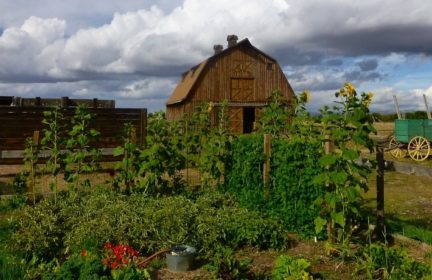Minor prepping victory: Perennial Fruit!
I was inspired last year by Josh’s review of “The Resilient Farm and Homestead”. I love the author’s take on improving resilience and regenerative systems, and seeing what we can do to provide more for ourselves. e.g. Falk says
> “Self-reliant households are the basic building blocks of any culture that is viable over the long term”> “If our goal is a peaceful, just society, self-reliance at the home and community levels must be a central focus of our lives”
I have been reading and learning about permaculture over the past few years. We don’t have a lot of space available, but last summer I decided to see what I could do in my own small life. I spent many hours of research learning what resilient, perennial species might grow well in our area (gardening zone 3), and spoke with several local gardeners and permaculturists on what food, plants, and species do well for them.
I landed on two perennial fruit bushes: saskatoons (also known as juneberry or pigeon berry), and haskaps (also known as honeyberries).
Both of these plants are hardy down to gardening zone 2, and both produce perennial fruit. They don’t seem to need a lot of care. When fully grown the bushes should take up space roughly five feet by five feet (depending on variety), which is great for me as they won’t get out of hand. If you’ve never had them – haskaps are similar to a long blueberry, though usually a more tart flavour.
I took a hard look at the yard space around our house and was able to free up enough space to plant four bushes – a path roughly five feet wide and twenty feet long, wrapping around a garage building next to our garden. It took some solid work with a five pound pickaxe and a sturdy shovel to dig deeply enough to plant them. But growing up doing manual work on a farm I find that kind of labor feels rewarding.
I have been attentively watering and working to care for the bushes since last year. During the hottest summer heat they took quite a bit of water each day; part of the reason I was motivated to set up a water barrel and system for rain capture. I did not expect the bushes to fruit in their first year. Haskaps are a bit finicky to plant and cultivate – you need specific varieties next to each other in order for them to pollinate. What’s more I discovered they are quite difficult to source and find – it took several months of hunting and calling before I found a greenhouse nursery that even carried them!
However, this week it all paid off: I was rewarded with a first harvest of perennial fruit!
This first picking was roughly one cup of berries:
It may be small, but this feels like a wholesome success. Is it a large amount? No. Will it feed an entire family? No. But it is more than zero. And it is hopefully renewable, and free. I have been able to build and introduce some valuable habitat, and add some flavour, nutrition, and variety into my meals.
One step forward!
Best of luck to everyone with your own gardens and journeys.
(edit: I have edited one of the photos and increased the contrast to make it easier to see)
-
Comments (30)
-
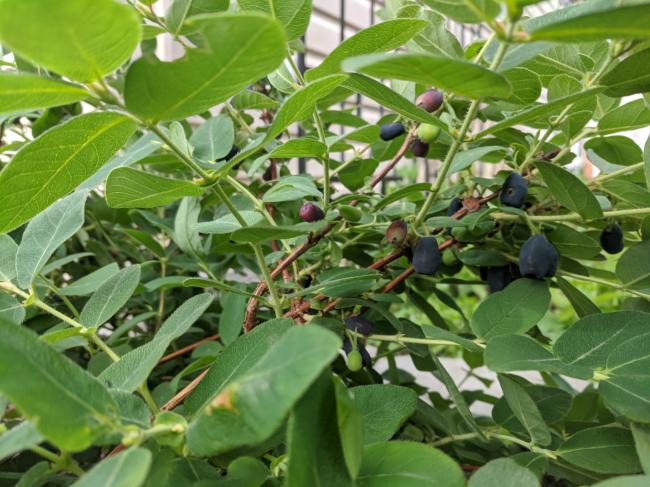
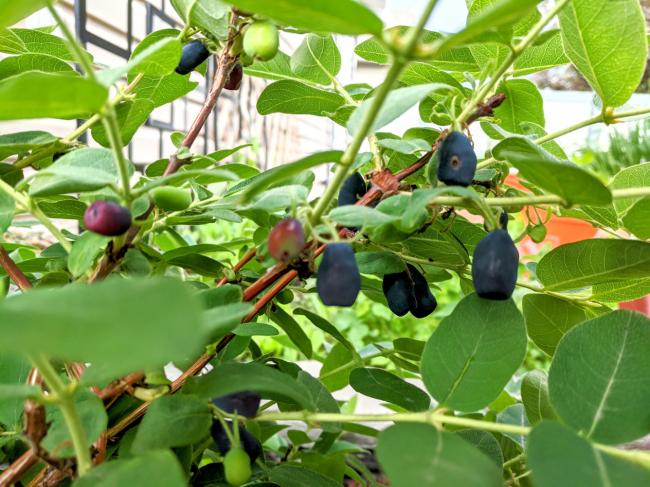
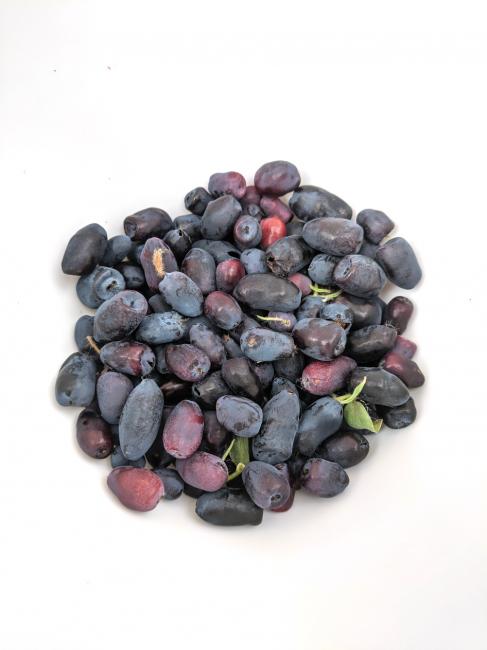
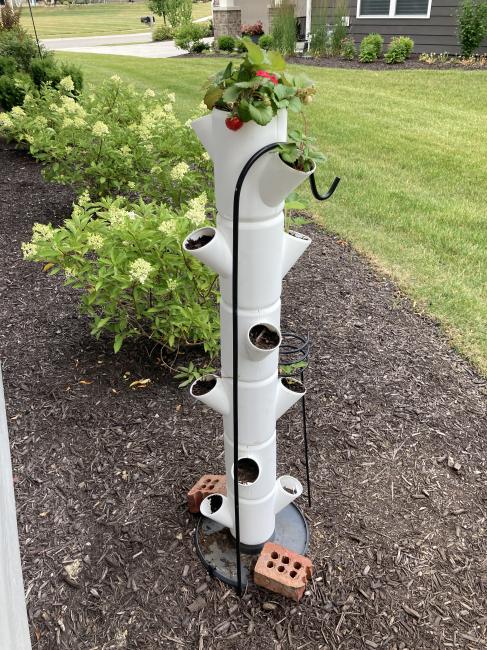 The bushes are growing & I have harvested about 4 strawberries so far. LOL. Fortunately, we have a patch of wild black raspberries on the periphery of the “forest” behind our home. I went out this past spring & pruned them – it made a world of difference in the production this year. There are some other patches nearby – they are competing with other wild plants & losing. My plan is to go out this fall & cut out some of the competing weeds & prune those raspberries. Nothing like having fresh fruit forty feet from the house. My only challenge is trying to minimize the chigger bites I have been getting – ITCHY, ITCHY! Have to do a better job of covering up & using more insect repellent. If anyone has any ideas on chigger “repellent” my skin would love to hear about it.
The bushes are growing & I have harvested about 4 strawberries so far. LOL. Fortunately, we have a patch of wild black raspberries on the periphery of the “forest” behind our home. I went out this past spring & pruned them – it made a world of difference in the production this year. There are some other patches nearby – they are competing with other wild plants & losing. My plan is to go out this fall & cut out some of the competing weeds & prune those raspberries. Nothing like having fresh fruit forty feet from the house. My only challenge is trying to minimize the chigger bites I have been getting – ITCHY, ITCHY! Have to do a better job of covering up & using more insect repellent. If anyone has any ideas on chigger “repellent” my skin would love to hear about it.